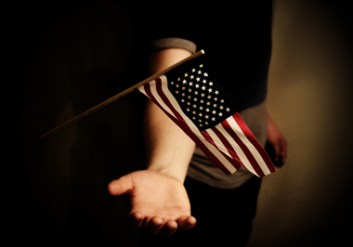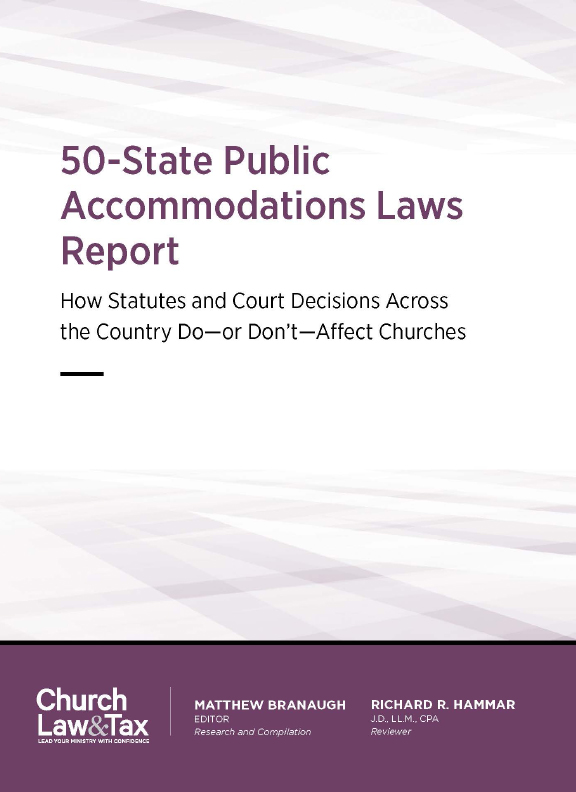On May 4, 2017, President Trump signed an executive order concerning religious liberty. Promises to “destroy” the Johnson Amendment—a provision in the US tax code that restricts churches’ political activity—have long been part of the President’s agenda and campaign platform. Does this latest executive order accomplish that agenda? What does this new order really mean for churches’ political involvement? Church Law & Tax asked four legal experts to offer their own views.
Howard Friedman
Law professor at University of Toledo College of Law and founder of Religion Clause
President Trump’s executive order on free speech and religious liberty does little to change the status quo. His mandate to vigorously enforce the law’s robust protections for religious freedom adds nothing to existing policy. It does not address the difficult question of when religious freedom prevails over competing governmental interests, such as enforcement of anti-discrimination laws. Perhaps the President’s additional direction to the attorney general to issue guidance interpreting religious liberty protections in federal law will shed light on the administration’s views on these clashes.
The executive order’s direction to the [Departments of] Treasury, Labor, and Health and Human Services . . . to consider amending the Affordable Care Act’s contraceptive coverage mandate in light of conscience-based objections to the current rules merely restates the direction the Supreme Court has essentially already given.
The most commented-upon portion of the executive order is President Trump’s focus on the Johnson Amendment. However, the executive order is extremely narrow. It does not instruct the [Department of the] Treasury . . . to broadly refrain from enforcing the Johnson Amendment. Instead it provides that, to the extent permitted by law, [the Department of the] Treasury should not take adverse action against houses of worship or religious organizations for speaking about “moral or political issues from a religious perspective” when [the Department of the] Treasury would not take action against a secular nonprofit that engages in similar speech. This is merely a non-discrimination mandate—do not treat religious speech as a political endorsement of a candidate when parallel secular remarks would not be seen as partisan campaigning. Over the years, the IRS (Internal Revenue Service) has never treated churches less favorably than it has treated secular nonprofits. If anything, [the] IRS has given more leeway to churches than to other 501(c)(3)s.
Frank Sommerville
CPA, attorney, and editorial advisor for Church Law & Tax
[President] Trump’s executive order assists churches and ministries to the maximum extent of his authority without an amendment to the Internal Revenue Code. Whether the IRS will abide by the intent of the executive order is yet to be seen.
Churches and ministries should have less risk than before if their pastors choose to use their pulpit to apply religious beliefs to current political issues.
This executive order does not replace the need to eliminate the Johnson Amendment via congressional action to restore churches and ministries to the same freedom of religion they enjoyed for the first 175 years of our country’s history.
Douglas Laycock
Robert E. Scott Distinguished Professor of Law at University of Virginia Law School
This [executive] order is pretty much nothing. Section 1 [of the executive order] is just a policy statement; it may lead to good things for believers down the road, but it does nothing immediately. Section 2 on the Johnson Amendment does not say that churches should be allowed to endorse candidates. It says only that they should not be found guilty of implied endorsements on facts where secular organizations would not be. I have heard no stories of that happening. But the IRS does jawbone churches in a way that it does not appear to jawbone secular nonprofits. Maybe that’s what it’s supposed to be about. . . . The [attorney general]’s guidance is likely to be pretty religion-friendly, but again, this order in itself does nothing. And no one can sue to enforce this order; that is not uncommon in [executive orders]. [President] Obama’s order on federal contractors and gay rights said the same thing.
[There is n]othing here about gay rights, federal contractors, or federal employees. That’s probably a good thing. The wedding vendor cases are all state law anyway; [the President] could not have done anything about them.
Stuart Lark
Attorney, national board member of the Christian Legal Society, and editorial advisor for Church Law & Tax
Religious organizations have a vital interest in their ability to exercise and express their beliefs as communities of faith. Perhaps contrary to the current perceptions, many current federal and state laws already do include robust religious accommodations that protect this vital interest. The executive order’s policy to vigorously enforce these protections is a welcome development for churches and other religious organizations.
Having said that, the executive order provides no standards against which the policy of vigorous enforcement may be measured. And more generally, the executive order offers nothing concrete in terms of additional religious liberty protections. With respect to the Johnson Amendment, the executive order merely restates existing law that the administration cannot discriminate against religious perspectives in its enforcement.
It has been argued that this executive order is simply laying the foundation for further, more concrete actions. Regardless of the actual scope of this executive order or of any future actions, religious organizations can take steps now to ensure that their policies and activities fall within the scope of current religious exercise protections. These steps include:
- Clarifying the organization’s religious beliefs, particularly on current social issues.
- Determining the standards by which the organization exercises and expresses these beliefs as a faith community. These standards may encompass the organization’s leaders, members, employees, volunteers, guests, activities, and facility uses.
- Documenting these beliefs and standards, and describing how the organization’s particular activities advance its religious mission.
- By working through these steps, many churches and religious organizations can establish that their actions with respect to current social issues are based not on criteria increasingly prohibited by law, but rather on their protected right to exercise their religious beliefs.
- Emily Lund was an assistant editor for Church Law & Tax from 2017 to 2018.




